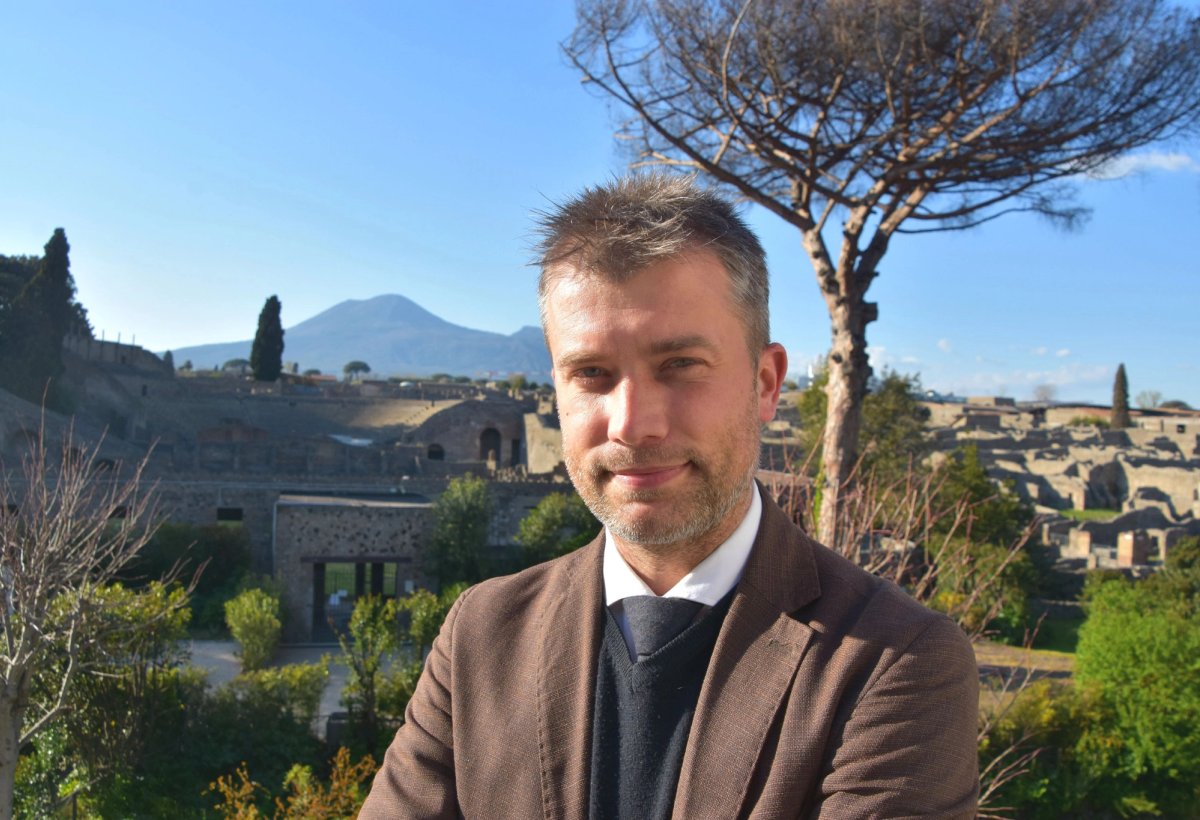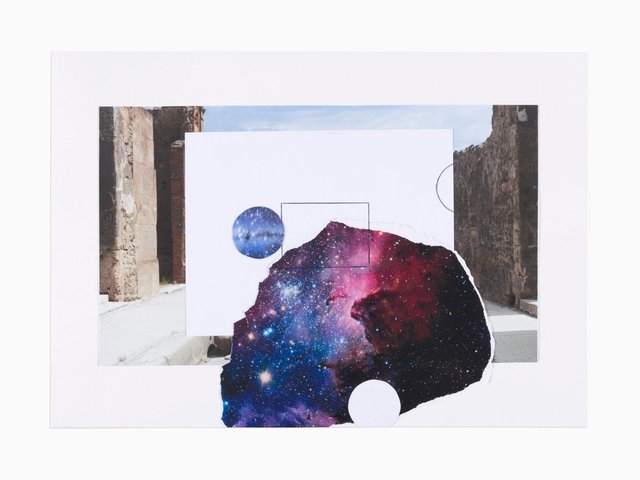On 8 April, the German-born archaeologist Gabriel Zuchtriegel took up his post as the new director of the Pompeii archaeological park, having been selected by the Italian culture ministry among 44 candidates for the prized role.
The appointment marks the 39-year-old’s return to the ancient Roman site that was buried by volcanic eruption in AD79: he previously served on the technical secretariat of the EU-funded Great Pompeii Project and worked on the 2015 exhibition Pompeii and Europe, 1748-1943, co-curated by the then Pompeii director, Massimo Osanna.
Zuchtriegel has spent the past five years running the archaeological park of Paestum, down the coast from Pompeii; it was merged with the Greco-Roman site of Velia in February 2020. His leadership has brought numerous innovations to the Unesco World Heritage site, including digital communications and a rebranding, as well as new excavations and the exponential growth of partnerships and visitor numbers.
Public access was opened inside Paestum’s ancient Greek temples for the first time, and its archaeological museum was refurbished. New indoor and outdoor routes were designed to be wheelchair-friendly. A stream of public archaeology initiatives included open digs with visitor participation and tours of the museum’s storerooms, while a travelling exhibition brought 135 artefacts from Paestum to China.
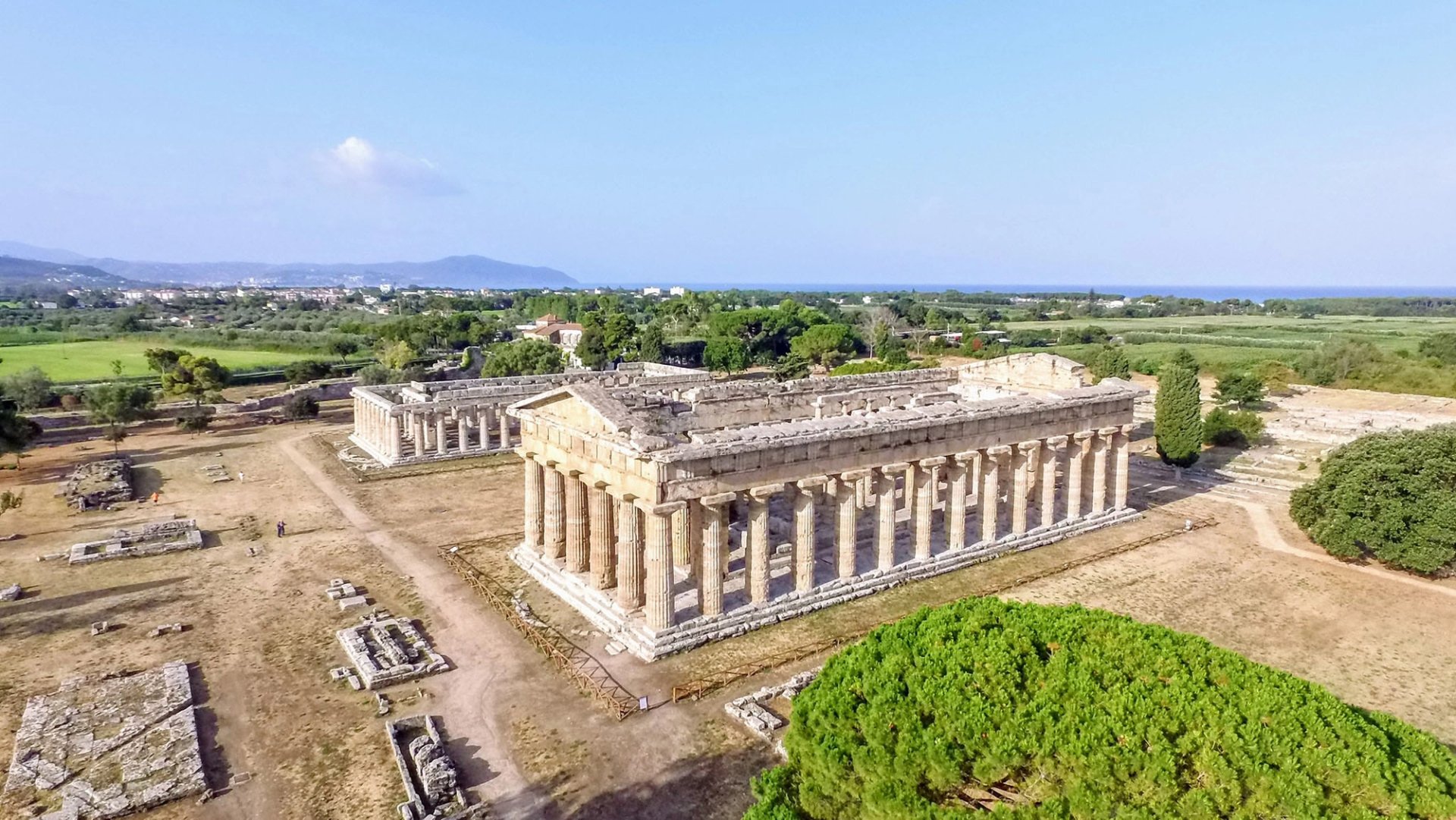
Zuchtriegel has spent the past five years running the archaeological park of Paestum, opening public access inside its Greek temples for the first time Photo: Parco Archeologico di Paestum
It was precisely this track record that led Zuchtriegel to be chosen among the shortlisted applicants for Pompeii, according to the Italian culture minister, Dario Franceschini. Yet his nomination in February immediately prompted the resignation of two of the four members of Pompeii’s scientific committee, Irene Bragantini and Stefano De Caro. The latter argued: “it is difficult for [Zuchtriegel] to have sufficient experience to decide, manage and direct conservation and above all restorations, where it is very easy to make mistakes but spend millions”.
Similar doubts were raised when Zuchtriegel was appointed to Paestum in 2015—the youngest, at just 34, of the cohort of “super directors” recruited internationally by the Italian government to modernise major museums and heritage sites, and one of the few foreigners. Critics also focused on the German nationality of the archaeologist who, last July, took an oath before the mayor of Matera to acquire Italian citizenship.
Originally from Weingarten in southern Germany, Zuchtriegel graduated in classical archaeology, prehistory and Greek philology at the Humboldt-Universität in Berlin, gained a doctorate in archaeology in Bonn and lectured in Greek and Roman art and archaeology at the universities of Bonn and Basilicata, southern Italy.
Though he remains tight-lipped about his plans for Pompeii, he says one area of focus will be the wider territory of minor sites and the “buffer zone” around the Unesco-inscribed archaeological area. Another priority will be developing preventive conservation activities “using innovative technologies, such as those tested at Paestum, from drones to sensors to satellites”. Digital media is also key to Zuchtriegel’s vision of public archaeology at Pompeii: “an idea of archaeology that is not just the vase on display but a process to be shared with people”.
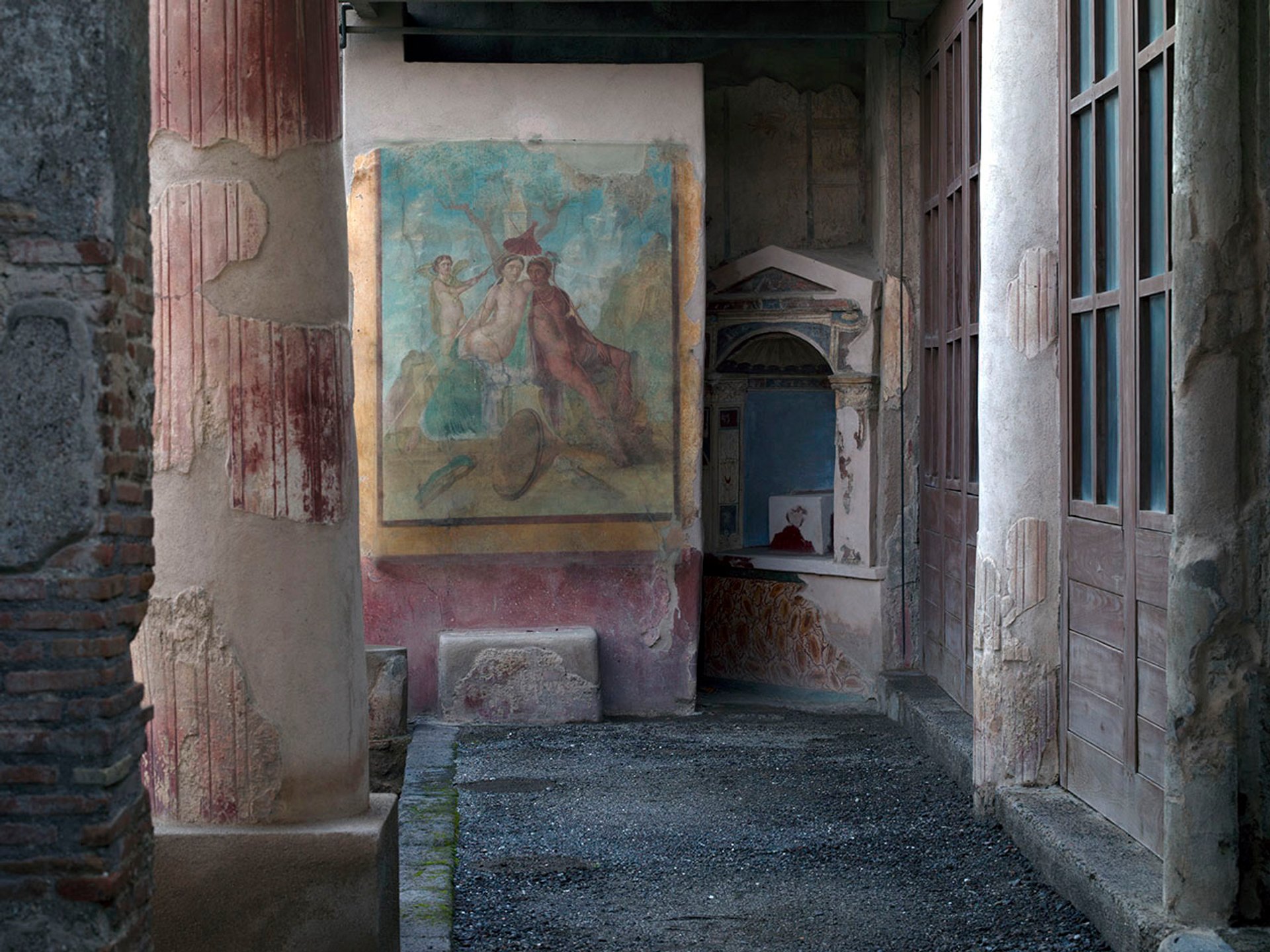
The House of the Ephebe at Pompeii, part of a new photographic project by Luigi Spina, “Pompeian Interiors and Spatial Archives” Photo: © Luigi Spina / Parco Archeologico di Pompei
In this interview with our Italian sister newspaper Il Giornale dell’Arte, Zuchtriegel discusses his concept of archaeology as an alternative to the “elitist male gaze” of official history, the importance of visitor participation and community outreach, and the need for a slower kind of cultural tourism in the wake of the Covid-19 pandemic.
Il Giornale dell’Arte: You faced controversy when you were appointed as director of the archaeological park of Paestum because you were a “foreigner”, like some of your fellow directors of Italian state museums. How did you experience this situation?
Gabriel Zuchtriegel: I have always been welcomed in an extraordinary way and I have never felt like a foreigner. In 2012, I moved with my family to Matera, where I stayed for two years for my research on the Greek colonisation of the Ionian coast at Heraclea, modern-day Policoro, which led to the book Colonization and Subalternity in Classical Greece [published by Cambrige University Press in 2018]. Then things evolved, I went to work at Pompeii for the Great Pompeii Project and then at Paestum. I experienced the criticism in a rather detached way. It did not really touch me in my daily work because both my colleagues and the local community welcomed me with great cordiality. In short, my being “non-Italian” has never been a problem.
Looking back at your archaeological research over the years, what drives you?
Classical archaeology has always fascinated me—that of the ancient Mediterranean with the Greeks, Romans and Etruscans. I have tried to deepen this theme both in my doctoral thesis on the sanctuary of Gabii, near Rome, and in my research on the Greek colonisation of Magna Graecia [in southern Italy]. For me, archaeology has always been less about the history of ancient art and architecture, but rather an overall vision. It’s about the relationship between society and its architectural, urban, religious and artistic expressions, a kind of anthropological gaze turned on the past—the possibility of discovering a world very different from ours, but to which we are connected by tradition. This continuity can be seen both in the stratigraphy [layering] of historic cities and in immaterial structures such as the Western tradition of manuscripts, ancient texts that have come down to the present. Many words that we currently use have an ancient etymology, such as “democracy” or “mathematics”. I feel the fascination of discovering a different world that is at the same time ours, our past.
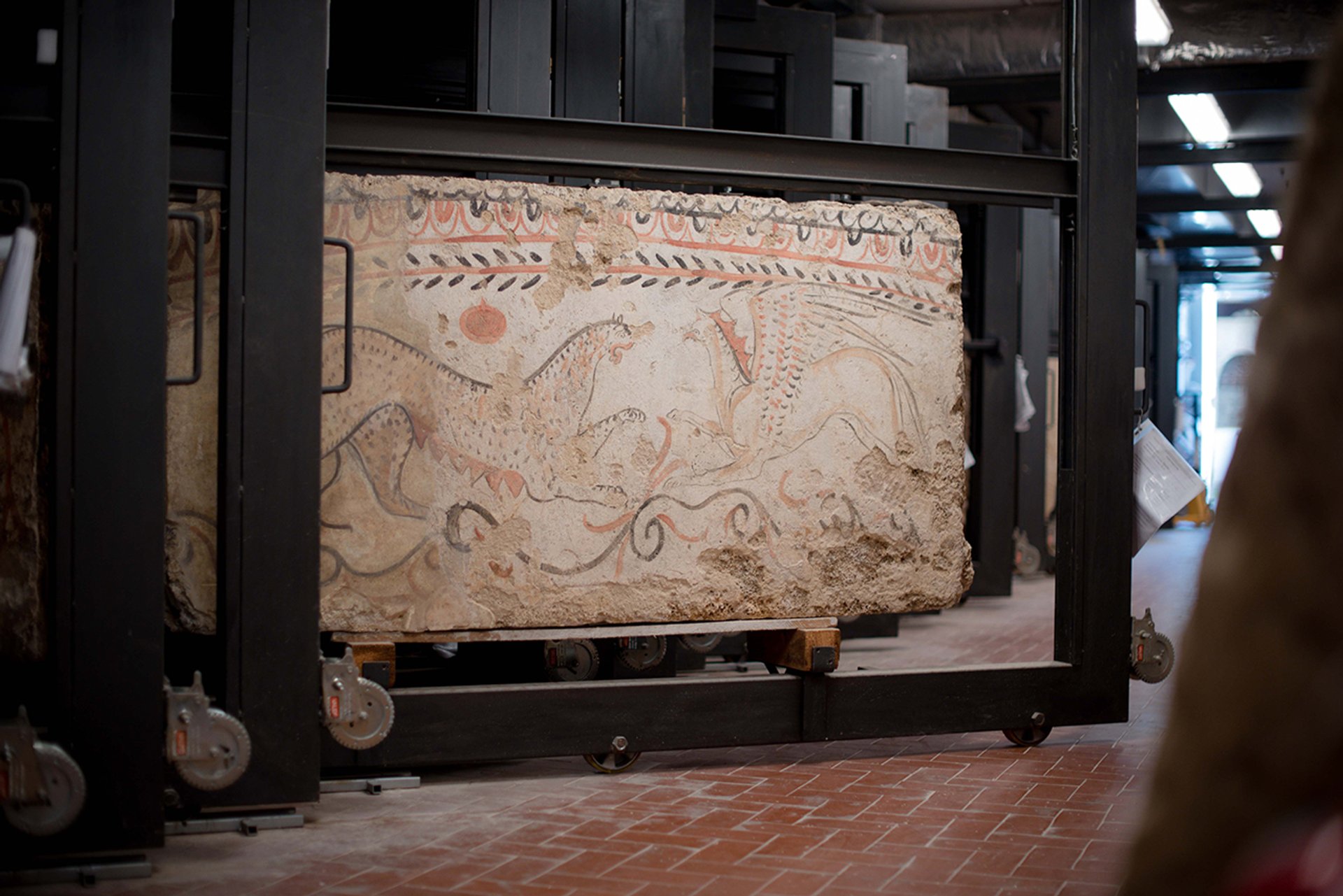
Zuchtriegel launched public tours going "behind the scenes" of the archaeological museum at Paestum, with visits to the storerooms Photo: Alessandro Pone / Parco Archeologico di Paestum
Which discoveries during your career have been the most exciting?
It was very exciting to discover in 2019 at Paestum a Doric temple from the fifth century that was preserved in an extraordinary way and which we are now excavating. The discovery revealed a lot of evidence of the evolution of architecture in a city of Magna Graecia, the links with the motherland [Greece] and the developments that somehow start from colonial reality.
Another great thrill for me was the archaeological survey we did in the hinterland of the territory of Heraclea in Lucania, in what is now Policoro, where we studied and mapped mainly fragments of tiles and ceramics. I was in Matera at the time and my book came out of this work.
I would like to reiterate the concept I have of archaeology not only as a study of beautiful objects or monuments but also of very ephemeral traces. The real discovery, in fact, was not the object itself but the landscape that has been transformed over the centuries. Today that landscape is still agricultural but in it we have found layers of history, of prehistory, showing the exploitation of agricultural resources by the Greek colonists and the subsequent modifications in medieval times. So we brought to light a part of the life of rural populations, of the working classes, that often finds no expression or voice in official history—the written version. Archaeology is also this, a very different archive from that of historians. Obviously, it is essential to work together because the goal is the same—to study the past—but we do not have a controlled and ordered archive according to the elitist male gaze that dominates the historical texts. Most of the texts and sources are written by men who belonged to the elite and therefore could afford to devote themselves to these studies, such as Thucydides or Herodotus. There are very few by women. Archaeology, on the other hand, has an archive of objects that are silent, which are difficult to talk about but through which we can try to reconstruct a part of the life of the past, of the social and cultural reality of that era that often does not appear in official texts or appears from another perspective.

The Greco-Roman site of Velia, which was merged with Paestum in February 2020 Photo: Parco Archeologico di Velia
How do you see the place of cultural heritage in Italy?
Thanks to the reform of a few years ago [the 2014-15 reorganisation and modernisation of Italian state museums under culture minister Dario Franceschini] and also to the many scholars involved in these issues, Italy has a pioneering role in cultural heritage. I am thinking on the one hand of the presence of a widespread heritage: the idea of Italy as an open-air museum stimulates the development of complex integrated strategies for the protection and management of cultural heritage.
But I am also thinking of the great tradition or debate in Italy on the theme of public archaeology. That is, the development of archaeology from the point of view of participation, opening up to local communities. Sharing not only the results of research—such as a vase on display or a monument turned into a museum—but also the discovery process, opening excavation sites to visitors and using digital media, as we did in Paestum, to explain how an excavation or a restoration works. To invite the public to participate in these activities as much as possible. In Italy there is a great wealth of initiatives of this kind.
Is there a difference in the way cultural heritage is viewed in Germany?
A lot could be said, but one difference is that in Italy, fortunately, cultural heritage is seen as a matter of public interest. There is a lot of attention on these issues in the press and in society. This is positive but a side-effect can be the many controversies, which demonstrate the passion of a society that wants to know, and has the right to know, how cultural heritage is managed, the new discoveries, the new strategies for the protection and public use of heritage. In Germany I see much less interest, for example, in the appointments of museum directors, and even museum activities are less discussed in the newspapers.
What is your idea of a public museum?
To truly fulfil its function, the museum must be a place for everyone, a reference point for the community, with open doors. It must focus on a dialogue to overcome the old one-way model of communicating. We have to share our knowledge with the public, using understandable and inclusive forms of communication, but we should also try in our work to bring out the voice of the public and of contemporary life. I like to think of museums as real cultural and social centres, first of all for the communities to which they belong, and in the case of Paestum also for the whole world, as a Unesco heritage site.
What future awaits museums and cultural heritage? What do you expect will change after the pandemic?
We must try to focus on slower tourism. There are more places and cultural landscapes to be discovered. I believe that people are changing their behaviour in light of the pandemic, which has been a traumatic experience for all of us. We have already seen positive signs in this direction since last summer, when we saw a boom in cultural tourism in Cilento [the region south of Naples where Paestum is located]. We experienced this phenomenon in Velia, where we had a 120% increase in visitors last August.


